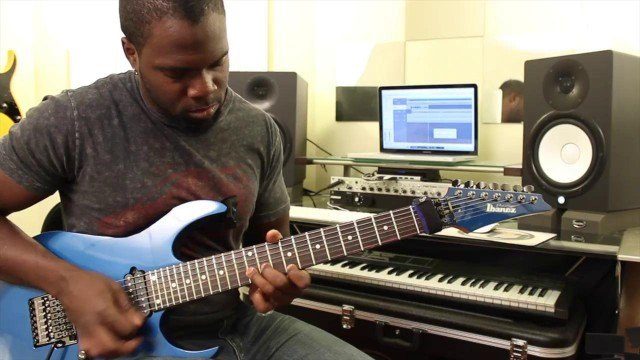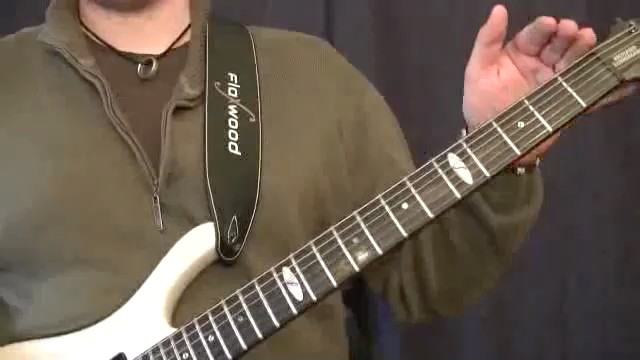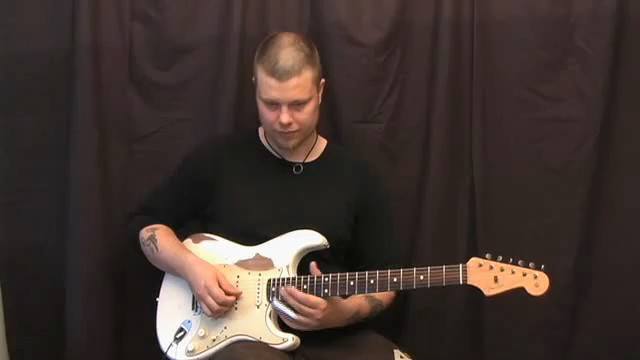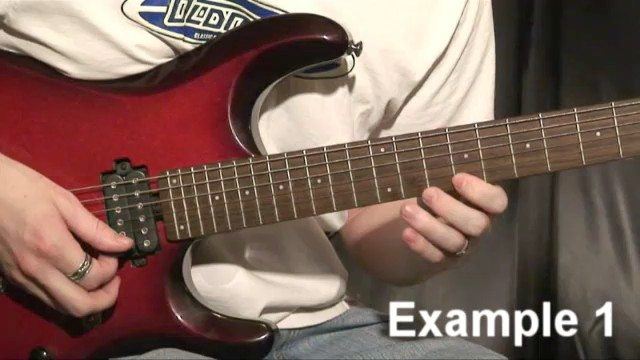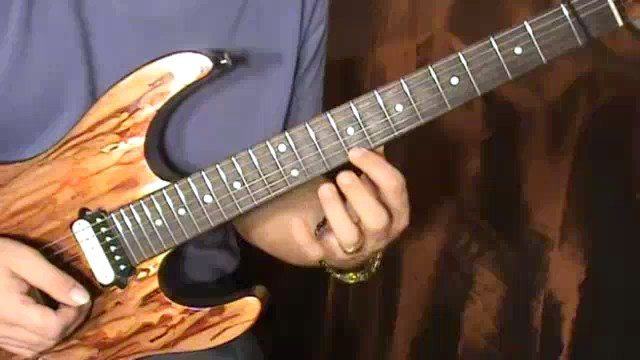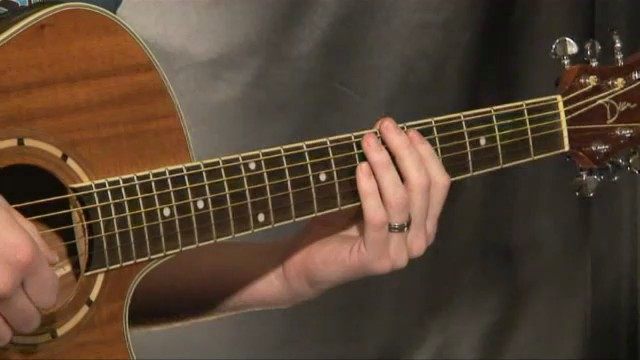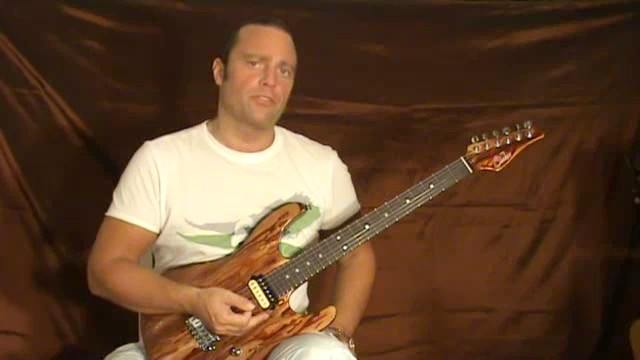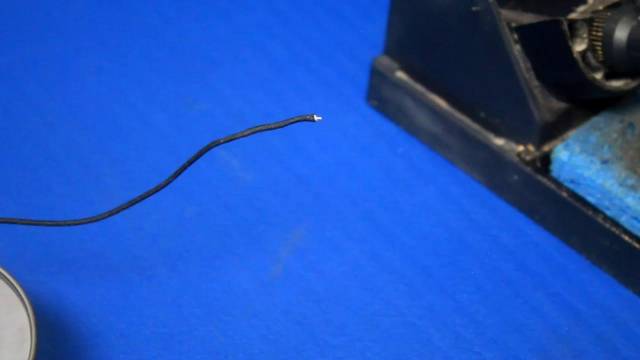Hey guys, for this tutorial I wanted to touch on something that I've received quite a few requests for - killing the noises that you don't wanna hear! In other words, let's focus on specific techniques used in the muting process alongside a variety of techniques (tapping, picking, string-skipping legato, etc.).
"Killing The Noise" With Legato
Legato will force us to dive directly into a ton of imparitive muting techniques; so it's a great way to get down to business.
EX. 1: Let's start by examining a simple legato line based on the G string.
The first thing you'll notice is that we are not picking. The legato approach is where guitarists can really notice many of the key issues associated with a lack of muting. The right hand (picking hand) is heavily involved as we'll be using the side part of the palm of our hand to mute all strings above the G (D, A, E strings). The left hand index finger will produce a "bar" shape and gently graze the strings beneath the G (B, E strings). Also, the index finger which remains on the 4th fret is shifted slightly upwards to nudge the D string for extra muting. To take things one step further, using one or more fingers on your picking hand as an anchor can also aid in the muting process by further preventing higher strings from ringing out.
EX. 2: Let's try some string transitions.
Here, we'll notice that as we transition upwards (to the D string), the picking hand naturally moves upwards as well. This means that the index finger of our left hand has an added duty: muting the G string. That same finger is now also responsible for gently nudging the A string, as a means for extra protection from nasty noises.
|
TO SUMMARIZE Right hand: Used for muting strings above the target string area. (ie. if we're picking the D string, our right hand mutes the A and E strings.) Left hand: Used for muting strings below the target string area. (ie. if we're picking the D string, our left hand mutes the G, B and E strings.) |






